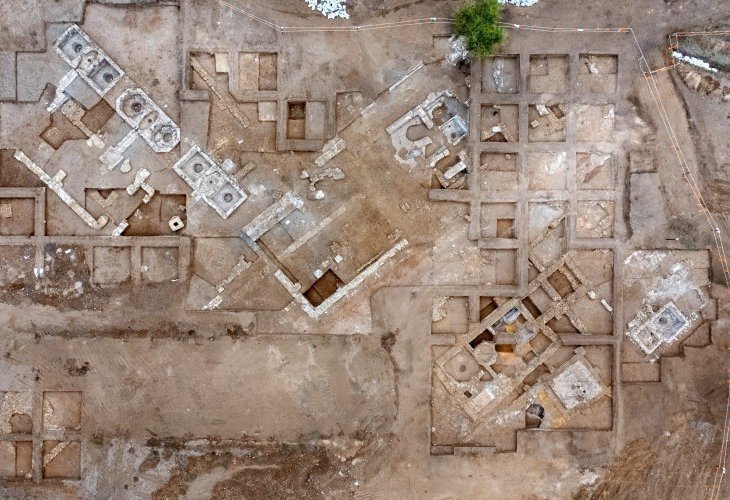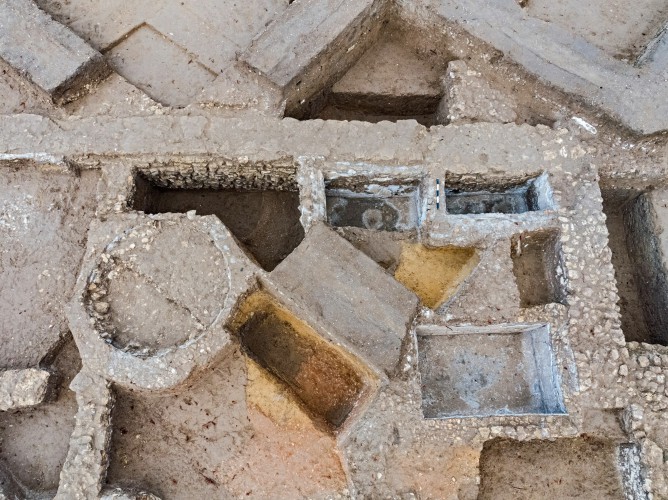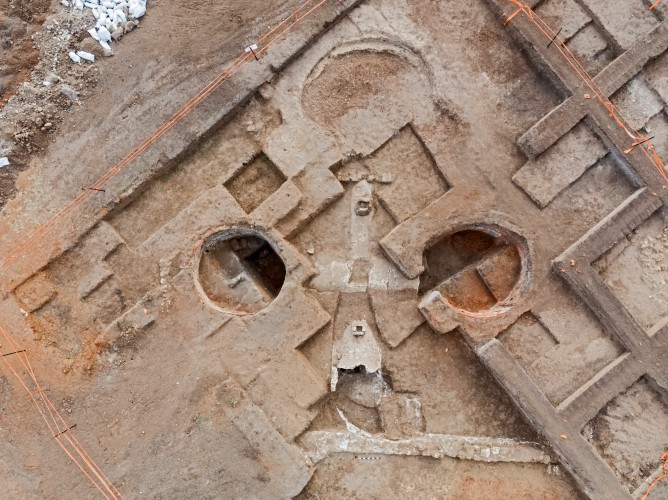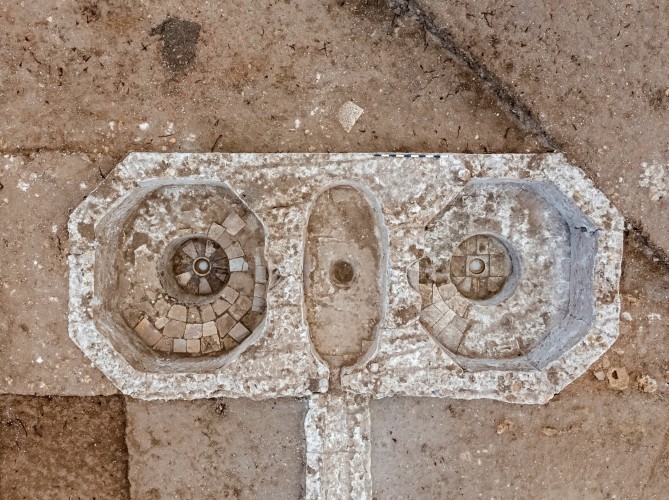Unearthing Roman Culinary Secrets in Ashkelon
Archaeologists have uncovered rare ancient installations in Ashkelon, revealing the culinary preferences of the Romans and Byzantines, including facilities for producing fish sauce and wine from the Byzantine period.
 The excavation site (Photo: Asaf Peretz, Israel Antiquities Authority)
The excavation site (Photo: Asaf Peretz, Israel Antiquities Authority)Fish sauce preparation pools (garum), among the few known in the eastern Mediterranean, have recently been uncovered by the Israel Antiquities Authority in Ashkelon. These excavations, funded by the Ashkelon Municipality and the Ashkelon Economic Company, are conducted in preparation for the development of an eco-sport park, shedding light on the culinary preferences of Romans and Byzantines who inhabited the area around 2,000 years ago.
Dr. Tali Erickson-Gini from the Israel Antiquities Authority explained: "Long before pasta and pizza sauces, the cuisine of ancient Romans relied heavily on fish sauce. Historical sources describe the production of this unique fish sauce, used as a staple condiment throughout the Roman and Byzantine periods across the Mediterranean. They also mention that the associated stench resulted in production facilities being located on the outskirts of settlements—indeed, these installations were found roughly 2 kilometers from ancient Ashkelon."
 Fish sauce industry installations (Photo: Asaf Peretz, Israel Antiquities Authority)
Fish sauce industry installations (Photo: Asaf Peretz, Israel Antiquities Authority)According to Dr. Erickson-Gini, this is a rare find in the region: "Only a few such facilities are known in the eastern Mediterranean. Texts even mention a Jewish kosher garum. The discovery of such an installation in Ashkelon indicates that Roman tastes spread across the empire not only in fashion but also in culinary habits."
The Roman site was abandoned over time, but the favorable conditions for growing quality grapes for wine remained. In the 5th century CE, during the Byzantine era, a monastery appeared at the site, likely sustained by this industry, including three wine presses and a church. While the church has not survived, remnants such as ornate marble pieces and mosaic fragments that decorated it have been found. Nearby, evidence of a massive pottery workshop for amphorae, used for wine marketing, suggests the wine was produced for export.
 Pottery workshop for wine amphorae (Photo: Asaf Peretz, Israel Antiquities Authority)
Pottery workshop for wine amphorae (Photo: Asaf Peretz, Israel Antiquities Authority) Byzantine-period wine presses (Photo: Asaf Peretz, Israel Antiquities Authority)
Byzantine-period wine presses (Photo: Asaf Peretz, Israel Antiquities Authority)"The site, serving as an industrial area across several periods, was abandoned again following the Muslim conquest in the 7th century CE. Nomadic families then settled in tents, dismantling parts of the site and selling the ancient materials for construction purposes," Dr. Erickson-Gini added. Evidence of this activity was found in the collection pits of the wine presses, which were transformed into garbage dumps containing numerous large animal bones, such as donkeys and camels.
(Video credit: Anat Reciuk and Emil Aljam, Israel Antiquities Authority)

